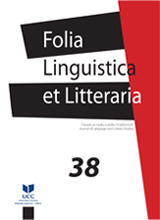F. M. Dostoevsky and Nihilistic Interpretation of Holbein's Painting “Dead Christ in the Tomb”
F. M. Dostoevsky and Nihilistic Interpretation of Holbein's Painting “Dead Christ in the Tomb”
Author(s): Daniel MiščinSubject(s): Studies of Literature, Russian Literature, History of Art
Published by: Filološki fakultet, Nikšić
Keywords: Dostoevsky; Holbein; Ippolit Terentyev; death; nihilism; Jesus Christ; resurrection
Summary/Abstract: Ever since Hans Holbein the Younger completed his painting, The Dead Christ in the Tomb, in 1522, a question has been looming over it, namely, what message does this dead body convey? Having seen the painting in 1847, the Russian classic writer Fyodor Dostoevsky was also intrigued by this question. In his novel, The Idiot, Ippolit Terentyev seeks to give a systematic and direct answer. The article presents a hermeneutic analysis of his position, and classifies it as nihilistic. Nihilism affects all three levels of Ippolit's discourse - the ontic, eschatological and ontological. Nevertheless, the question remains: can such nihilism be justified from the perspective of the painting itself? Posing this question in the context of Alois Riegl’s periodization of European culture has proven to be interesting. He is of the opinion that, following the era of Christian monotheism, the third and the last period of the development of European culture is the natural-scientific period. This particular period, Riegl believes, began in 1520. If we choose to accept this periodization model, The Dead Christ may be seen as one of the first paintings of the modern era, keeping in mind that Holbein painted it in 1521 and 1522. As regards the issue of the body of The Dead Christ being immersed in physical suffering to the extent that the possibility of resurrection is excluded - as Ippolit presumes - this article offers certain reasons of an anatomical nature which may be interpreted theologically and which deny the validity of Ippolit’s modern, nihilistic hypothesis in regard to the meaning of Holbein's Dead Christ.
Journal: Folia Linguistica et Litteraria
- Issue Year: 2021
- Issue No: 38
- Page Range: 51-66
- Page Count: 16
- Language: English

